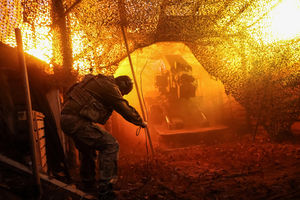Premium
How Dusit terror attack unfolded

Vehicles go up in flames at the scene of the terror attack at Dusit D2 Hotel, Nairobi, on January 15, 2019. PHOTO | FILE | NATION MEDIA GROUP
What you need to know:
- On an idyllic day in Nairobi, attackers snaked their way to Westlands and set off a chain of events that would change the lives of Kenyans forever.
- ‘‘If I die, I love the Lord and I believe I’ll go to heaven. Please tell my family I love them. I love you Caleb, Mark and Carol.’’ This tweet from a victim goes viral as news of the attack spread fast around the world.
It is January 15, a typical Tuesday afternoon in Nairobi. It’s warm and partly cloudy. Other than the characteristic vibrancy of city life, it’s a quiet and unremarkable day.
At 14 Riverside Drive, less than five kilometres west of the central business district, life rolls on. But something awful is about to happen that will throw the country into pandemonium and scar the lives of Kenyans forever.
At 2.30 pm, a Toyota Ractis Registration No KCN 340E and another vehicle drive into DusitD2 Hotel complex in Westlands.
Four occupants, wearing headscarves and bearing AK-47 guns, are captured by CCTV cameras advancing into the compound. The quartet announces its arrival with explosions as the men hurl grenades at vehicles in the parking lot, setting them ablaze.
This complex has five buildings housing an upscale hotel, and is home to several local companies and international organisations. Hundreds of people are immersed in their work, unaware of the events unfolding outside.
Once inside, a fifth attacker walks unnoticeably to the Secret Garden restaurant at the lobby of the building. Here, he blows himself up, killing about seven patrons and hotel staff. Multiple others are injured.
After this explosion, the other attackers force their way further into the vast compound, by shooting at guards. Indiscriminate shooting follows. Chaos erupts.
Now on high alert, patrons, residents and employees of different companies take cover.
From their hideouts, they make frantic calls to family and friends. They break the news to the world: The hotel is under attack, possibly a terror attack.
In the bathroom of Grosvenor building where he’s hiding, a distressed Ronald Ng'eno knows that if he isn't rescued, he will surely die.
He tweets: ‘‘If I die, I love the Lord and I believe I’ll go to heaven. Please tell my family I love them. I love you Caleb, Mark and Carol.’’
The tweet goes viral as news of the attack spreads fast around the world. First to respond are private security personnel and off-duty police officers who immediately engage the attackers, forestalling the threat of more casualties.
Their gallantry to thank, hundreds are rescued and led into safety. Still, hundreds are trapped in the building. The location of the attackers is unknown, but witnesses can hear heavy gunfire. Help is needed, and fast.
People with gunshot wounds, others with cuts from the explosions, are helped to waiting ambulances and rushed to various hospitals in the city.
Response teams, including the Flying Squad, Anti-Terrorism Police Unit and the Bomb Squad led by Director of Criminal Investigations George Kinoti swing into action shortly afterwards.
Soon, the area is cordoned off. Motorists are asked to use alternative routes to allow rescue teams to conduct the operation uninhibited, and to prevent the possibility of more casualties.
Inspector-General of Police Joseph Boinnet confirms the ongoing assault, but is hesitant to declare it a terror attack.
Minutes later, members of the highly specialised Recce Squad arrive at the crime scene. The sensitive rescue mission immediately gets under way.
For the next 20 hours, the country will be on the edge as the terrorists hold hundreds hostage and rescuers battle them in an abysmal exchange of gunfire and explosions.
FEVER PITCH
As the fight reaches fever-pitch, Somali-based terror group Al-Shabaab claims responsibility.
Al-Shabaab claims that it’s a response to the United States’ recognition of Jerusalem as the Israeli capital. The Islamist militant group is also opposed to Kenya Defence Forces’ (KDF) incursions into Somalia.
The raid comes exactly three years after the deadly El-Adde attack in Somalia in which many KDF soldiers were killed. The exact number of KDF soldiers killed has not been revealed to date.
Police, paramedics and other emergency services camp several hundred metres away from the building.
Every few moments, survivors are led out into the night where they reunite with their families to cries of joy and relief.
Inside the building, gunfire rages, growing wilder by the hour, punctuated by shattering blasts. The combat lasts the whole night and into the morning.
By daybreak, more than 700 people have been evacuated from the building. At 10 am the following day, 18 hours after the attackers first accessed the building complex, President Uhuru Kenyatta addresses the nation, declaring the siege over.
‘‘I can now confirm that as at about one hour ago, the security operation at Dusit complex is over and all the terrorists eliminated,’’ Mr Kenyatta said.
The Head of State said that a total of 14 civilians died in the attack. Five attackers were also killed by the police. Later, reports put the death toll at 21.





